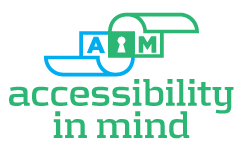You may be the person in your organization tasked with this research job. How can you find out what is necessary and practical, not to mention legal? If you are a lawyer, you can certainly wade right into the statutes and interpret their intent and meaning, but how does a lay-person find good information, and the best advice possible?
It may be like being asked to find out how you might replace the foundation of your office building, and not knowing why you need to do it, or the first thing about construction. Where to do you start?
DO NOT assume that a "508 Services" offer on a website menu means the company actually does that kind of work, or that anybody in the company has more than a passing knowledge of both the regulation and the process for conformance. They may just be a pass-through in a related business (most often related to publishing and document preparation). You may fill out a form and request information, general, or specific to a document, hoping to learn something from the response.
You will get a reply from the company's 508 contact, and if your request was specific, a bid and an "evaluation" of your document- certainly an invitation to tell them more about your situation. This may be helpful, but doesn't really tell you much about the most important piece of the puzzle, the remediator. That is the specialist who actually does the work. The remediator is not a salesperson trying to make a commission, but an expert who can answer questions about your documents and the process of making them compliant.
When doing 508 research, look for knowledgeable sources, beware of a sales pitch.
How do you buy a pig in a poke? A "poke" is a bag that obscures what's inside. You buy the bag, you may or may not get the pig. Section 508 compliance may seem like that: you send your document off, it comes back a few days later looking essentially the same, maybe with active TOC and bookmarks. You've been told that it passes this or that 508 checker- a machine check-- and it probably does. Did you get a compliant document? You hope so, and deliver the document to your client. But what happens then? The document may go straight to publication without further review, or your client may have reviewers (who may be other contractors, btw) that WILL know the difference. The good ones know what makes a document accessible, and that's what you want to deliverInterview potential remediators, see if they can answer tough questions about your job. If they are just a sales person, realize that they are just a middleman adding their commission to the costs. Look for expertise, it's your only man.


